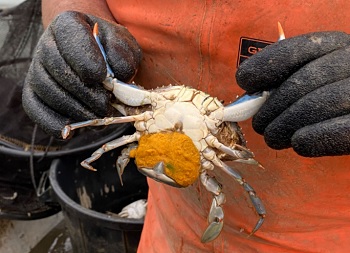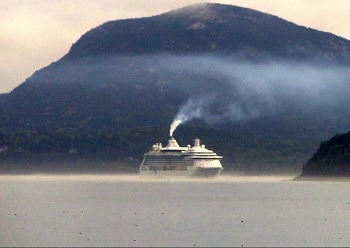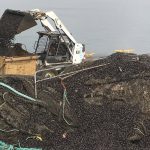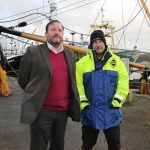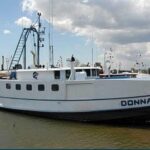Tag Archives: oysters
NCFA Weekly Update for February 24, 2025: Scientific Uncertainty/Important Blue Crab Update
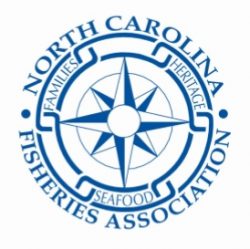 Abundance vs Stock Status. Last week we highlighted the high variability in estimates of Speckled Trout abundance from one stock assessment to the next, using Spawning Stock Biomass (SSB) estimates for 2008 from each of the three assessments to show the uncertainty. The 2009 assessment estimated ~800,000 lbs of mature females in 2008. The 2015 assessment estimated ~3,000,000 lbs of mature females in 2008. The 2022 assessment estimated ~4,000,000 lbs of mature females in 2008. Remember, these highly unreliable SSB estimates are compared to the SSB threshold, or level of abundance considered to be sustainable, to determine if a stock is overfished and if reductions are needed. more, >>CLICK TO READ<< 15:29
Abundance vs Stock Status. Last week we highlighted the high variability in estimates of Speckled Trout abundance from one stock assessment to the next, using Spawning Stock Biomass (SSB) estimates for 2008 from each of the three assessments to show the uncertainty. The 2009 assessment estimated ~800,000 lbs of mature females in 2008. The 2015 assessment estimated ~3,000,000 lbs of mature females in 2008. The 2022 assessment estimated ~4,000,000 lbs of mature females in 2008. Remember, these highly unreliable SSB estimates are compared to the SSB threshold, or level of abundance considered to be sustainable, to determine if a stock is overfished and if reductions are needed. more, >>CLICK TO READ<< 15:29
NCFA Weekly Update for February 10, 2025 – Six Fisheries on the Chopping Block, Part 2 and Part 3
 Part 1, Next week, at the meeting in Kitty Hawk, the Marine Fisheries Commission (MFC) will be looking at Amendment 4 to the Southern flounder Fishery Management Plan (FMP). The only action item in this amendment is moving the 2026 allocation shift of 50/50 up one year instead of following the plan outlined in Amendment 3, which was just finalized in 2022. more, >>CLICK TO READ<<
Part 1, Next week, at the meeting in Kitty Hawk, the Marine Fisheries Commission (MFC) will be looking at Amendment 4 to the Southern flounder Fishery Management Plan (FMP). The only action item in this amendment is moving the 2026 allocation shift of 50/50 up one year instead of following the plan outlined in Amendment 3, which was just finalized in 2022. more, >>CLICK TO READ<<
Part 3, Blue Crab – Next week, February 19th-21st, the Marine Fisheries Commission (MFC) will also be reviewing a Decision Document looking at using Adaption Management to reduce commercial blue crab harvest. Although no vote will be required at this meeting, the timeline for implementation of management changes is scheduled for final vote in May 2025! more, >>CLICK TO READ<< 11:18
NCFA Weekly Update for February 10, 2025 – Six Fisheries on the Chopping Block at Upcoming MFC Meeting
 The North Carolina Marine Fisheries Commission (MFC) meets February 19th-21st to discuss and vote on cutting harvest, time closures, closing large areas, and even eliminating usable gears in six vital NC fisheries. Blue crab, false albacore, flounder, speckled trout, oysters, and clams. As there are so many issues being brought forward at this one meeting, I will try to give a quick overview of each species on the agenda and follow up with additional updates with more detailed information about each issue before the meeting. more, >>CLICKTO READ<< 20:40
The North Carolina Marine Fisheries Commission (MFC) meets February 19th-21st to discuss and vote on cutting harvest, time closures, closing large areas, and even eliminating usable gears in six vital NC fisheries. Blue crab, false albacore, flounder, speckled trout, oysters, and clams. As there are so many issues being brought forward at this one meeting, I will try to give a quick overview of each species on the agenda and follow up with additional updates with more detailed information about each issue before the meeting. more, >>CLICKTO READ<< 20:40
Catching a glimpse of the Mississippi seafood industry
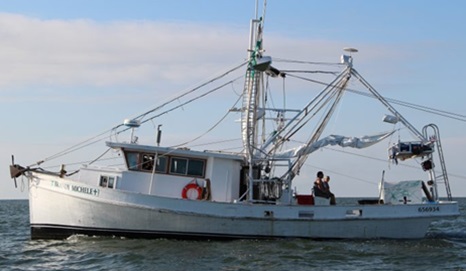 If you were asked to list the seafood available from the nutrient-rich waterways along the Mississippi Gulf Coast, how many could you name? What comprises the shellfish? The finfish? Go! Sadly, I could only name a few. That is why there is a website provided by Mississippi Seafood that gives us the information we need. The seafood identification, scientific name, common name, season, peak season, and similar species are included. There are suggested cooking methods and a description regarding the flavor of each seafood mentioned. There are brown, pink, and white shrimp, oysters, and blue crabs under the shellfish category. Then, for the finfish, there are Mississippi Gulf Black Drum, Flounder, Mullett, and Red Drum. Red, Mangrove, Lane, and Yellowtail are part of the snapper family. Another one is the Mississippi Spotted Sea Trout. more, >>CLICK TO READ<< 09:34
If you were asked to list the seafood available from the nutrient-rich waterways along the Mississippi Gulf Coast, how many could you name? What comprises the shellfish? The finfish? Go! Sadly, I could only name a few. That is why there is a website provided by Mississippi Seafood that gives us the information we need. The seafood identification, scientific name, common name, season, peak season, and similar species are included. There are suggested cooking methods and a description regarding the flavor of each seafood mentioned. There are brown, pink, and white shrimp, oysters, and blue crabs under the shellfish category. Then, for the finfish, there are Mississippi Gulf Black Drum, Flounder, Mullett, and Red Drum. Red, Mangrove, Lane, and Yellowtail are part of the snapper family. Another one is the Mississippi Spotted Sea Trout. more, >>CLICK TO READ<< 09:34
Fishermen Thank Governor Youngkin for Declaring “Commercial Waterman Safety Week” in Response to Growing Threats
 Virginia Governor Glenn Youngkin has declared this week, September 15-21, 2024, ‘Commercial Waterman Safety Week.’ The governor’s proclamation recognizes that Virginia’s more than 1,500 commercial watermen ‘risk their lives sustaining a tradition passed down through generations,’ help generate over $1 billion in economic impact for the Commonwealth, and deserve ‘access to a secure and safe work environment. The Menhaden Fisheries Coalition and the Virginia Waterman’s Association are grateful to Governor Youngkin for recognizing the vital role of Virginia watermen, including menhaden fishermen and watermen harvesting crabs, oysters, clams, fish, and other shellfish. Governor Youngkin has taken important steps to ensure Virginia’s fishermen and watermen have a safe place to work on the water. more, >>CLICK TO READ<< 19:15
Virginia Governor Glenn Youngkin has declared this week, September 15-21, 2024, ‘Commercial Waterman Safety Week.’ The governor’s proclamation recognizes that Virginia’s more than 1,500 commercial watermen ‘risk their lives sustaining a tradition passed down through generations,’ help generate over $1 billion in economic impact for the Commonwealth, and deserve ‘access to a secure and safe work environment. The Menhaden Fisheries Coalition and the Virginia Waterman’s Association are grateful to Governor Youngkin for recognizing the vital role of Virginia watermen, including menhaden fishermen and watermen harvesting crabs, oysters, clams, fish, and other shellfish. Governor Youngkin has taken important steps to ensure Virginia’s fishermen and watermen have a safe place to work on the water. more, >>CLICK TO READ<< 19:15
Skipjacks, oysters: The fight for survival of two Chesapeake Bay icons
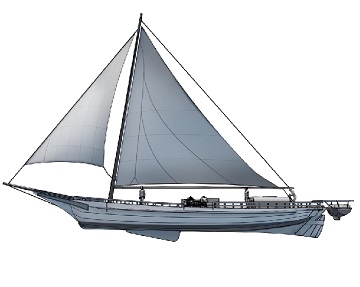 Starting Sunday, oyster enthusiasts will once again be free to pick up their rakes and tongs and harvest Maryland’s signature shellfish delicacy from the floor of the Chesapeake Bay and its tributaries.A month after the season begins, commercial oyster fisherman will take to the water to get their own haul. But one boat will stand out among from the rest: the skipjack, a nimble oyster-dredging sailboat that represents the state’s long maritime tradition. “The oysters are looking better. I’m optimistic,” said Shawn Ridgley, a veteran oysterman and skipjack captain who currently gathers data for the Maryland Department of Natural Resources. A typical skipjack carries a crew of five and can legally harvest 100 bushels of oysters a day. Lately, “boats are catching their limit by 10:00, 10:30 in the morning,” Ridgley said. >>click to read<< 14:05
Starting Sunday, oyster enthusiasts will once again be free to pick up their rakes and tongs and harvest Maryland’s signature shellfish delicacy from the floor of the Chesapeake Bay and its tributaries.A month after the season begins, commercial oyster fisherman will take to the water to get their own haul. But one boat will stand out among from the rest: the skipjack, a nimble oyster-dredging sailboat that represents the state’s long maritime tradition. “The oysters are looking better. I’m optimistic,” said Shawn Ridgley, a veteran oysterman and skipjack captain who currently gathers data for the Maryland Department of Natural Resources. A typical skipjack carries a crew of five and can legally harvest 100 bushels of oysters a day. Lately, “boats are catching their limit by 10:00, 10:30 in the morning,” Ridgley said. >>click to read<< 14:05
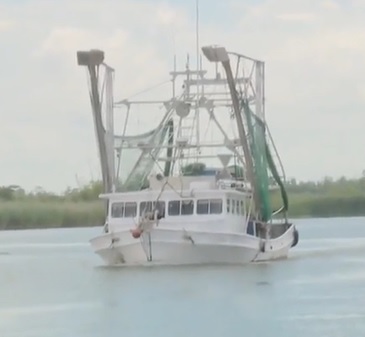
‘I don’t know where the breaking point is at’: A look at the threats the Louisiana seafood industry faces
Whether it’s crawfish, crabs, fish, shrimp or oysters, Louisiana is known for its seafood. The seafood industry is one of Louisiana’s largest employers. But the Louisiana seafood industry is threatened. “We are accountable for one-third of the seafood in this country. That’s something to be proud of,” said Mitch Jurisich, the chairman of the Louisiana Oyster Task Force and a third-generation oyster farmer. “But the industry, it seems like we’ve been under attack for several years now.” Those we talked to in the shrimp and oyster fishing business say there are problems gripping the seafood industry, including price, government projects and natural disasters. Let’s start with the price. Video, >click to read/watch< 21:44
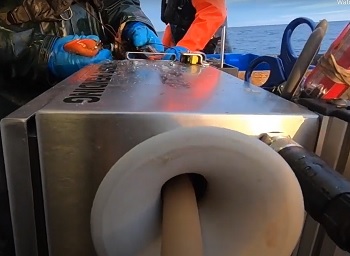
Alliance Rubber Company announces the launch of the Seafood Banding Machine for lobster and oysters
The Seafood Banding Machine was created to decrease the pain associated with manual banding, but these machines also increase efficiency and lower overhead costs in oyster and lobster processing.,, Captain Martin Collins of a lobster fishing vessel in LFA 35, tested the bander on his vessel. According to Collins, “I normally rely on two guys to band the catches each season, but this time around they couldn’t make it. I had to hire a green bander at the last minute, who suffered from two torn rotator cuffs. To my surprise, this 55 year-old guy who couldn’t lift the traps, was able to process 15,000 lbs. of lobster on this machine without any issues what so ever. If it weren’t for this machine, I wouldn’t have made it through the season.” >click to read< Watch a demo of the Lobster Banding Machine, >click to read/watch, more info< 07:47
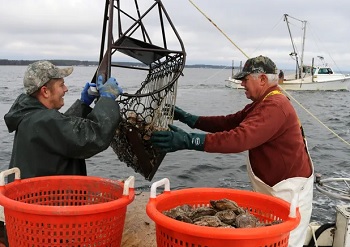
Maryland oyster industry may be forever altered by Coronavirus pandemic
The pandemic-impacted oyster season has been difficult for the industry in Maryland, causing farmers and watermen to rethink how they sell their product and changing how programs conduct oyster restoration. Robert Brown, waterman and oyster grower, has bottom oyster leases on the tributaries of the Potomac River. Brown, president of the Maryland Watermen’s Association, said he sells the majority of his oysters to oyster packaging houses, which aren’t working at capacity because they can’t sell the oysters once they shuck them. Watermen are being hit hard in the pandemic, and it might be a few years before we get back to normal,,, >click to read< 08:36
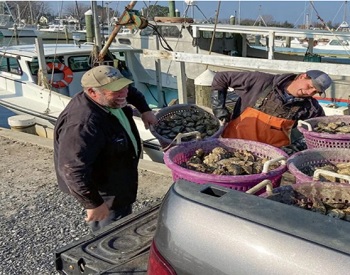
Oyster Prices Plummet As Diners Stay Home Amid Pandemic
With several hours of daylight to spare, Ronnie Robbins and his son, Jason, had already docked their 36-foot deadrise workboat on Hooper’s Island and started unloading their briny cargo.,,, It isn’t a supply problem. Watermen in Maryland and Virginia alike say they are having no trouble landing their daily wild oyster quotas.,,, “We got lots of oysters, and they’re excellent quality,” said Bill Sieling,,, The problem is decreased demand caused by the coronavirus pandemic. >click to read< 09:31
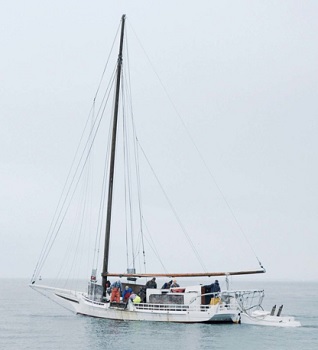
Last of the Chesapeake Skipjacks
Over the course of a Chesapeake Bay waterman’s life, big memories tend to swallow smaller ones. So when seventy-two-year-old Harold “Stoney” Whitelock looks back on his childhood now, it’s all misty images of water and boats, and little else. “That’s all my family talked about at Sunday dinner,” he says. “Boat this and boat that.” Whitelock is one of the bay’s last skipjack captains. Long, shallow wooden boats with tall, wide sails, skipjacks survive as the only commercial sailing vessels left in North America. The nine or so (by Whitelock’s estimate) still used to dredge for oysters all concentrate here on Maryland’s toothy Eastern Shore, kept afloat by a couple of dozen people who speak with a distinctive brogue that’s fading by the generation, too. >click to read< 09:27

Seafood Connect! Maine Fishermen hold events to get products direct to customers
It’s first come, first served this weekend at Maine’s Working Waterfront – Seafood Connect event. In the midst of everything happening in the world, the local fishing community has been hit hard. This event will feature fresh seafood at an “off the boat” price. Any fisherman who is legal to sell is welcome. No preorders. Fishermen will decide what/if they are selling each week. As of May 4, the group will be switching from the Rockland location to the Reny’s in Camden. Bring bags to take your seafood home. Names, phone numbers, locations, product diversity! >click to read< 09:21
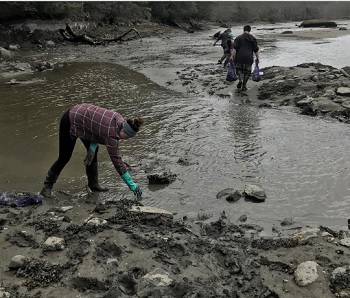
Plymouth-based Manomet Inc. tests hard-shell clams for replenishing Gulf of Maine fisheries
When Maine’s shellfish farmers had questions, they turned to Manomet Inc. for answers. The environmental science organization in Plymouth is helping the industry find solutions to predation problems plaguing soft-shell clams in coastal waters along the Gulf of Maine. Marissa McMahan, director of the Fisheries Division at Manomet, is working on a pilot program that may lead to the introduction of quahogs, a hardshell variety that is more resistant to predators, to deal with the changing conditions to the north. Photo’s, >click to read< 14:36
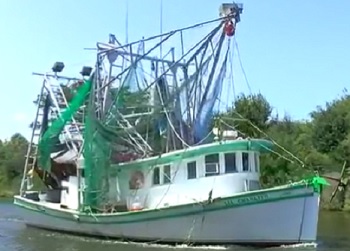
Louisiana Dept. of Wildlife and Fisheries: report of loss linked to Bonnet Carre Spillway opening
“This is the worst I’ve ever seen it in my life,” Shrimper Charles Robin said. Robin is a shrimper in Yscloskey. He said his catch dropped by more than half this year compared to last. “Last year on average I’d catch a thousand or 1,200 pounds a day on a slow day. Now, you can’t even catch 500 pounds,” Robin said. According to Wildlife and Fisheries, brown shrimp landings are down 34 to 44 percent compared to the five year average. St. Bernard Parish President Guy McInnis said he’s actively pushing for an Emergency Fisheries Declaration in Washington, D.C. Video, >click to read<16:33
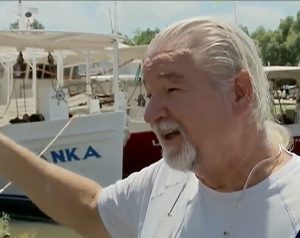
Refusing to Leave! St. Bernard fisherman in Washington, DC to make their case for millions in federal aid
Fishermen and elected leaders from St. Bernard Parish are refusing to leave Washington, DC without $150 million in federal disaster aid, funded through a federal fisheries disaster declaration. They say repeat openings of the Bonnet Carre spillway has flooded the coast with fresh water that seafood cannot tolerate. St. Bernard Parish President Guy McInnis said the openings are destroying the $4 billion regional seafood industry and the money would be used to subsidize fishermen, repair fishing grounds and coastal waters. >click to read< 08:35
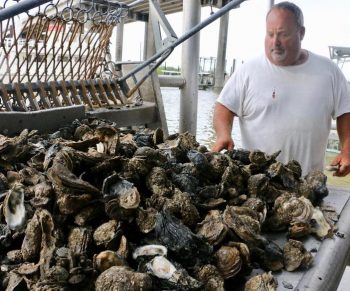
Katrina, BP, 2019 Mississippi River — Oyster Industry Braces For Another Major Disaster
The commercial fishing industry on the Gulf Coast has seen two major disasters in the last 15 years: Hurricane Katrina and the BP oil spill. Now, some fear we’re on the cusp of a third. The culprit: historic flooding from the Mississippi River. Commercial oysterman Mitch Jurisich is picking through a pile of freshly harvested oysters at a dock in Empire, Louisiana. One hand clutches an oyster knife, the other grabs a bivalve from the top of the mound. “This one’s good right here,” he says before tossing it aside and picking up another. “This one’s not good.” Audio, >click to read< 20:28
Hurricane Harvey decimates Galveston Bay’s oyster population
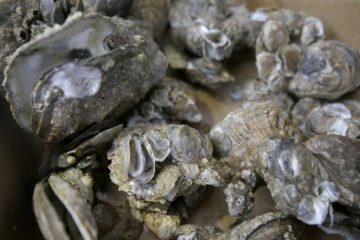 The storm was the latest setback to a multimillion-dollar commercial fishing and seafood-processing industry that appeared poised to finally rebound from floods, including two devastating tropical weather systems, and an extended drought in less than a decade. Shrimpers, crabbers and other fishermen who work the bay also will feel an impact. But it’s most lethal in the case of the oysters, as Harvey-spawned rains and rainwater runoff drove down the bay’s salinity to fatal levels. of 12 to 30 parts per thousand are ideal for a healthy oyster harvest in Galveston Bay, which researchers say is the nation’s most bountiful. Yet preliminary tests performed by commercial fisheries on Tuesday revealed salinity levels at 0 to 5 parts per thousand – and excessive water continues to drain into the bay. click here to read the story 15:14
The storm was the latest setback to a multimillion-dollar commercial fishing and seafood-processing industry that appeared poised to finally rebound from floods, including two devastating tropical weather systems, and an extended drought in less than a decade. Shrimpers, crabbers and other fishermen who work the bay also will feel an impact. But it’s most lethal in the case of the oysters, as Harvey-spawned rains and rainwater runoff drove down the bay’s salinity to fatal levels. of 12 to 30 parts per thousand are ideal for a healthy oyster harvest in Galveston Bay, which researchers say is the nation’s most bountiful. Yet preliminary tests performed by commercial fisheries on Tuesday revealed salinity levels at 0 to 5 parts per thousand – and excessive water continues to drain into the bay. click here to read the story 15:14
Apalachicola Advocates, Fishermen Continue Fight For Water
 At the end of a river system that feeds booming Atlanta, and farms throughout Georgia and Alabama, sits Apalachicola Bay. The Army Corps of Engineers decides how much water flows here, where the river meets the Gulf. For years, Florida has argued it’s not getting its fair share, and the Bay and surrounding Franklin County are struggling because of it. T.J. Ward is a third generation fisherman who works at his family’s business in downtown Apalach. Over the past ten years, he’s seen the lack of freshwater take its toll, in the form of oyster predators. “One of those are, they call them snails, but we call them oyster drills, the locals do. And they eat oysters. And they’re even cannibalistic, so when they run out of oysters they’ll eat themselves. I mean they’re devastating. That’s one thing that’s killed the end of the bay that our oyster company’s on,” Ward said. Audio report, continue reading the story here 10:15
At the end of a river system that feeds booming Atlanta, and farms throughout Georgia and Alabama, sits Apalachicola Bay. The Army Corps of Engineers decides how much water flows here, where the river meets the Gulf. For years, Florida has argued it’s not getting its fair share, and the Bay and surrounding Franklin County are struggling because of it. T.J. Ward is a third generation fisherman who works at his family’s business in downtown Apalach. Over the past ten years, he’s seen the lack of freshwater take its toll, in the form of oyster predators. “One of those are, they call them snails, but we call them oyster drills, the locals do. And they eat oysters. And they’re even cannibalistic, so when they run out of oysters they’ll eat themselves. I mean they’re devastating. That’s one thing that’s killed the end of the bay that our oyster company’s on,” Ward said. Audio report, continue reading the story here 10:15
The quest to save South Mississippi’s oysters – Fishermen begin oyster relay under DMR program
 The quest to save South Mississippi’s oysters continued Monday. Coast fishermen were out on the Mississippi Sound all morning working to relocate oysters. The fishermen were working with the Department of Marine Resources to not only save the oyster crop, but to also save their livelihood. For the first time in months, the was alive with activity as fishermen readied their boats for a day’s work. Over the past five years, many of these fishermen have had a very limited amount of time on the water, if any. “Everybody’s excited to do it,” said fisherman Shelby Cooper. Read the article here 10:12
The quest to save South Mississippi’s oysters continued Monday. Coast fishermen were out on the Mississippi Sound all morning working to relocate oysters. The fishermen were working with the Department of Marine Resources to not only save the oyster crop, but to also save their livelihood. For the first time in months, the was alive with activity as fishermen readied their boats for a day’s work. Over the past five years, many of these fishermen have had a very limited amount of time on the water, if any. “Everybody’s excited to do it,” said fisherman Shelby Cooper. Read the article here 10:12
Fishermen hope to rescue oysters, as well as their livelihood
 Coast fishermen are preparing to make much-needed money in the face of disaster. Beginning at sunrise Monday, fisherman will begin to move oysters to safety away from surging fresh water into the Mississippi Sound. But, it won’t be easy, and the money likely won’t be enough to make up for a disastrous six-year struggle.The Oyster Recovery Program is allowing fishermen to move oysters from the St. Joe’s Reef south of Waveland out of harm’s way. Fresh water from the recently opened Bonnet Carre spillway is threatening their habitat. Video, Read the article here 09:34
Coast fishermen are preparing to make much-needed money in the face of disaster. Beginning at sunrise Monday, fisherman will begin to move oysters to safety away from surging fresh water into the Mississippi Sound. But, it won’t be easy, and the money likely won’t be enough to make up for a disastrous six-year struggle.The Oyster Recovery Program is allowing fishermen to move oysters from the St. Joe’s Reef south of Waveland out of harm’s way. Fresh water from the recently opened Bonnet Carre spillway is threatening their habitat. Video, Read the article here 09:34
North Carolina: Economic impact on the half-shell
As mollusks go, are an especially generous lot. They clean the water. They help stabilize eroding shorelines. And they’re delicious, especially with butter. Which is why North Carolina is working on a statewide plan to become “the Napa Valley of oysters,” as several people proclaimed during this month’s Oyster Summit in Raleigh. Business owners, local officials, and marine researchers from across the state gathered at the N.C. Museum of Natural Sciences to outline bivalve strategies for the coastal economy. Read the rest here 09:24
are an especially generous lot. They clean the water. They help stabilize eroding shorelines. And they’re delicious, especially with butter. Which is why North Carolina is working on a statewide plan to become “the Napa Valley of oysters,” as several people proclaimed during this month’s Oyster Summit in Raleigh. Business owners, local officials, and marine researchers from across the state gathered at the N.C. Museum of Natural Sciences to outline bivalve strategies for the coastal economy. Read the rest here 09:24
Mississippi oysters make a comeback – for a price
 The Mississippi oyster industry is bouncing back from a triple whammy — Hurricane Katrina, the BP oil disaster and the Mississippi River flood — and is still a long way from its peak 10 years ago. Just over 78,000 sacks of oysters were harvested in the reporting year that ended June 30, according to Department of Marine Resources. Read more here 08:44
The Mississippi oyster industry is bouncing back from a triple whammy — Hurricane Katrina, the BP oil disaster and the Mississippi River flood — and is still a long way from its peak 10 years ago. Just over 78,000 sacks of oysters were harvested in the reporting year that ended June 30, according to Department of Marine Resources. Read more here 08:44
China lifts geoduck ban, to Peninsula suppliers’ relief
 China has lifted a five-month ban on live shellfish from U.S. West Coast waters, a move greeted with relief by North Olympic Peninsula producers. The Chinese government announced the ban’s end in a letter Friday, officials said. China imposed the ban in December on the import of clams, oysters, mussels and scallops harvested from Washington, Oregon, Alaska and . Read more here 10:33
China has lifted a five-month ban on live shellfish from U.S. West Coast waters, a move greeted with relief by North Olympic Peninsula producers. The Chinese government announced the ban’s end in a letter Friday, officials said. China imposed the ban in December on the import of clams, oysters, mussels and scallops harvested from Washington, Oregon, Alaska and . Read more here 10:33
Gulf Oystermen Harvest Support from D.C. Legislators and Organizations
 Over the course of four days, the oystermen met with more than 20 Congressmen or staff, as well as with the House Transportation Committee, the Food and Drug Administration, the Senate Labor Appropriations Subcommittee, the National Fish and Wildlife Foundation, the U.S. Department of Agriculture and the National Oceanic and Atmospheric Administration‘s new head of fisheries Eileen Sorbeck. Read more here 13:14
Over the course of four days, the oystermen met with more than 20 Congressmen or staff, as well as with the House Transportation Committee, the Food and Drug Administration, the Senate Labor Appropriations Subcommittee, the National Fish and Wildlife Foundation, the U.S. Department of Agriculture and the National Oceanic and Atmospheric Administration‘s new head of fisheries Eileen Sorbeck. Read more here 13:14
“So far it looks like a good season,” “So far all I’ve heard is good news.” – Chuckie White, President of the Kent County Watermen’s Association
 There have been no reports of dead or dying oysters, and prices are up because the Gulf Coast fishery is still crippled after the Deepwater Horizon oil well blowout in April 2010. more@myeasternshoremd 09:04
There have been no reports of dead or dying oysters, and prices are up because the Gulf Coast fishery is still crippled after the Deepwater Horizon oil well blowout in April 2010. more@myeasternshoremd 09:04
Oyster rising: Farmers work to propel aquaculture in NC
WILMINGTON — The bays and sounds of North Carolina once yielded hundreds of thousands of bushels of oysters a year, before pollution, overfishing , disease and other factors caused their populations to decline. Now a small group of scientists and growers is laying the groundwork to revive the industry by cultivating oysters in cages and bags. more@newsobserver06:23:59
Steps taken in Chatham Mass. to protect oysters, public health

Selectmen and the state Department of Marine Fisheries agreed to an emergency relay request from the Chatham Shellfish Company. continued@wickedlocal
Florida Fishermen become farmers in quest for a new oyster industry
“We knew nothing about oysters,” Clay Lovel said. So the men studied oyster history. They experimented with enclosures and planting methods. The fishermen became farmers. Nine months later, with some 150,000 pieces growing in 500 cages, their first crop is coming in — big, succulent 3-inch oysters that within a couple of hours on this late May day, will be in the family fish house cooler, ready to be served on the half shell to seafood lovers at the Lovels’ Spring Creek Restaurant. continued @ tallahassee.com






